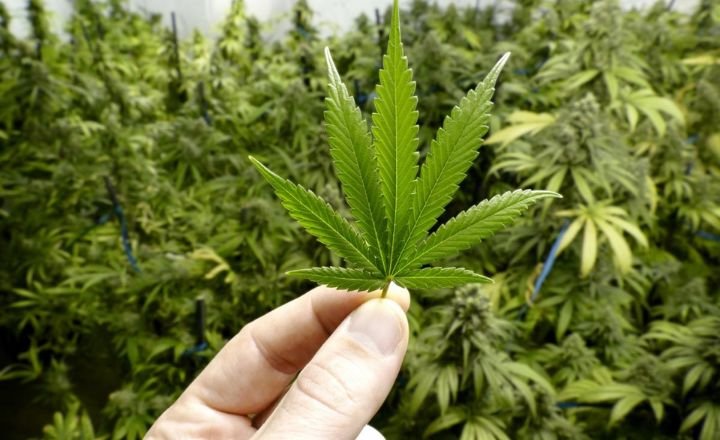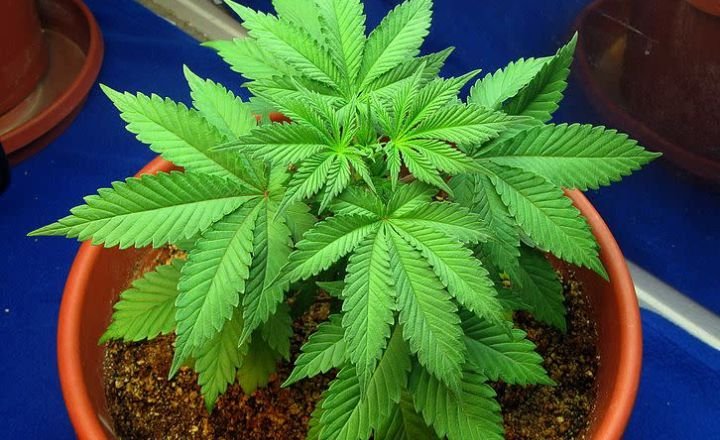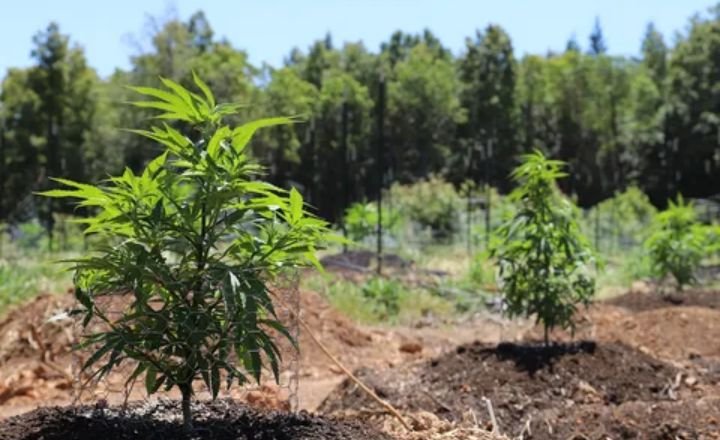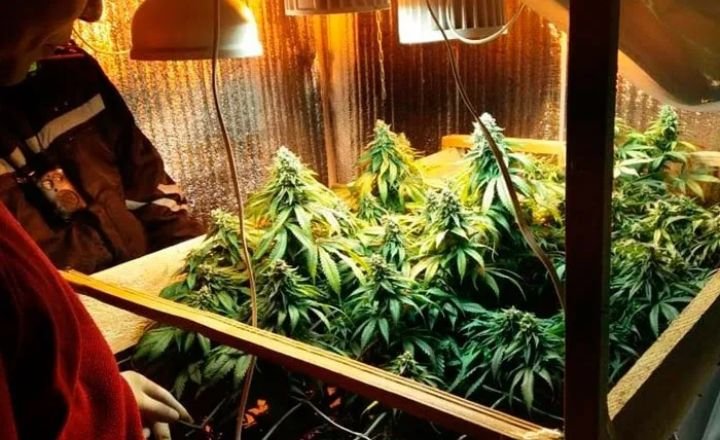The green wave of cannabis cultivation has swept across the globe, transforming a once-stigmatized plant into a beloved staple for both recreational and medicinal users. How to grow Cannabis is the question where the green rush has transformed cannabis from a taboo plant to a beacon of wellness and creativity. The idea of growing your cannabis is more enticing than ever.
Cultivating cannabis can be rewarding and fulfilling when you’re seeking relief from chronic pain, exploring the nuances of different strains, or simply indulging in a new gardening adventure.
How To Grow Weed, Cannabis Grow Setup
Creating an optimal cannabis grow setup is essential for cultivating high-quality plants. Start by selecting the right environment, indoor or outdoor, each offering distinct benefits.
Indoor setups allow for precise control over light, temperature, and humidity; they require investments in equipment like LED grow lights and carbon filters to manage airflow and odors.
Germination Stage
In the germination stage, which spans from Day 1 to Day 7, cannabis seeds embark on their transformative journey into seedlings. This critical phase lays the foundation for robust growth. This week, seeds absorb moisture and swell, pushing through their hard shell in a captivating display of nature’s resilience.

By Day 3 or 4, you should expect to witness tiny taproots emerging, a sign that your seeds are ready to take root. Providing optimal conditions, maintaining humidity levels around 70-80% and temperatures between 70°F to 85°F ensures a smoother transition as these delicate plants reach toward the light.
Preparing your cannabis seeds for planting involves more than simply placing them in soil; it’s an art that maximizes potential during those crucial first days.
Start by soaking the seeds in distilled water for up to 24 hours, keeping them dark and warm. This mimics natural processes and encourages germination. Once soaked, opt for either direct planting into a pre-moistened medium or using paper towels within a plastic bag until you see roots emerge.
Cannabis Seedlings Day By Day
As cannabis seedlings emerge, the first couple of weeks are crucial for their development. During this 2-3 week timeline, emphasis on light exposure sets the foundation for solid growth.
Seedlings thrive under a consistent photoperiod of 18 hours of light and 6 hours of darkness; utilizing full-spectrum LED lights closely mimics the sun’s spectrum, promoting robust stem and leaf development.
Positioning these lights just a few inches above the seedlings ensures they receive adequate lumens without becoming leggy. Paying attention to temperature and humidity rounds out your care strategy: keeping daytime temperatures around 70-80°F (21-27°C) creates an environment where seedlings can photosynthesize efficiently.
Maintaining relative humidity levels at 60-70% provides sufficient moisture without promoting mold or mildew growth. Monitoring environmental conditions closely daily will ensure healthy cannabis seedlings, setting them up for successful flourishing in their later stages of life.
Vegetative Stage
The vegetative stage is critical for any plant, marking the transition from seedling to a robust growing system. During these 4-6 weeks, plants demand nutrients that promote leafy growth, especially nitrogen-rich fertilizers that enhance chlorophyll production.
Watering during this stage merits careful attention; plants thrive in consistently moist and well-drained conditions.

Implementing a cycle of deep watering followed by drying out helps to encourage more profound root growth, establishing a more resilient foundation for future flowering or fruiting phases.
Pair this with an efficient light schedule, ideally 18 hours of light and 6 hours of darkness, to simulate their natural environment and optimize photosynthesis.
Cannabis Flowering Stage
The cannabis flowering stage begins 8 to 11 weeks into the plant’s life cycle, transitioning from vigorous vegetative growth to blooming.
Light cycles play a pivotal role in this transformation; most growers switch to a 12/12 light schedule, 12 hours of light followed by 12 hours of complete darkness to signal the onset of flowering.
This shift mimics natural daylight changes and triggers hormonal responses that cause the plant to develop buds.
Cannabis Grow Setup
Selecting the right spot for outdoor cannabis growth is paramount, as it can significantly influence yield and quality. Sunlight is the lifeblood of cannabis; ideally, your plants should bask in at least six to eight hours of direct sunlight each day.
Consider the unique characteristics of your growing area, and observe how tree canopies or nearby structures may cast shadows at different times of the day.
Wind protection is equally crucial; strong gusts can damage or dry delicate plants too rapidly. Strategically placing barriers like hedges or setting up trellises shields your plants and can create microclimates supporting healthier growth.
Climate and strain selection further refine your success rate in outdoor growing. Different strains exhibit unique tolerances to temperature fluctuations, humidity levels, and seasonal changes, making it essential to match them with your local climate.
Outdoor Grow Guide Yield
Caring for outdoor cannabis plants requires a delicate balance of hydration, nutrients, and pest management to achieve a bountiful yield. Water deeply when the top 1-2 inches of soil feel dry; this encourages robust root growth while preventing overwatering. Incorporate organic nutrients to enrich the soil with essential minerals, ensuring plants thrive throughout their lifecycle.

Pest management is another critical aspect of successful outdoor cultivation. Instead of using synthetic pesticides, consider leveraging nature’s allies: beneficial insects like ladybugs can keep aphid populations in check.
At the same time, neem oil provides an effective organic solution against various pests without harming the environment.
Moreover, controlling environmental factors enhances plant vitality. To promote healthy growth, maintain optimal daytime temperatures between 70-85°F and nighttime ranges of 60-70°F. Aim for humidity levels around 40-60% during the vegetative stage, gradually lowering them to 30-50% during flowering to encourage resin production. This combination maximizes both quality and quantity in your harvest.
Maximizing Yield
Topping is a powerful technique that involves cutting the main stem of a plant above a node to encourage multiple colas, creating a bushier structure. This maximizes light exposure for lower branches and enables the plant to distribute energy more evenly, increasing yields. we can grow cannabis from seeds.
Pruning complements this approach by removing excess foliage that may compete with primary buds for power and light. It’s an often underutilized strategy that promotes air circulation within the canopy while preventing pest infestations and diseases caused by overcrowding.
When combined with low-stress training (LST), which involves bending and tying down branches instead of cutting them, gardeners create an optimal canopy that allows light penetration at all levels.
Best Grow Setup For Indoors
The light cycle is a critical component in the best indoor grow setup, significantly influencing the physiological processes of cannabis plants during both vegetative and flowering stages.
During vegetative growth, consistent 18/6 light cycles, 18 hours of light followed by 6 hours of darkness, facilitate robust leaf and stem development, allowing plants to reach their full height and bushiness before they transition to flowering.

Shifting to a 12/12 schedule initiates blooming, triggering hormonal changes that lead to bud formation. Advanced growers often experiment with variable light schedules or supplemental UV lighting during flowering to enhance terpene profiles and yield quality.
Nutrient management is equally pivotal in maximizing growth potential across different growing methods.
Soil-grown cannabis benefits from microbial interactions that foster organic nutrient uptake, while hydroponic systems allow for precise control over nutrient composition without the risk of soil-borne pathogens.
Hydroponics can deliver faster growth rates but require meticulous monitoring; thus, beginning growers may find cultivating in rich soil more forgiving as it provides a buffer against imbalances.
Common Mistakes To Avoid When Growing Cannabis
- Overwatering is a silent killer in the cannabis garden, often manifesting as drooping leaves or yellowing stems.
- Many new growers instinctively assume that more water equals healthier plants, but cannabis thrives on a delicate balance of hydration.
- A simple trick to avoid this pitfall is to stick your finger about an inch into the soil; if it feels dry at that depth, it’s time to water.
- Correct nutrient balance plays a pivotal role in plant health and productive yields. However, many cultivators fall into the trap of assuming more is better.
- Cannabis nutrients are formulated with specific ratios for various stages of growth; understanding these differences can catapult your garden from mediocre to magnificent.
- Inspecting under leaves and around stems can reveal early signs of infestation before it spirals out of control. I
If you discover unwelcome guests or mold spores, consider using organic pesticides or introducing beneficial predators like ladybugs to maintain ecological harmony in your grow space.
These practices, in tandem with addressing common nutrient deficiencies through targeted feeding regimens, will help create a robust environment where healthy cannabis thrives effortlessly.
Conclusion
How to grow cannabis can reward the potential for a high-quality product by understanding the fundamental aspects of cultivation. Successfully growing cannabis involves Understanding and mastering key steps such as selecting the right strains.
Providing optimal nutrients.Maintaining a suitable environment. Each stage offers opportunities for experimentation and refinement, allowing you to tailor your approach to meet your plants’ unique needs. Cultivation is both an art and a science
FAQs
How long should cannabis take to grow?
Cannabis plants can take 3 to 6 months from seed to harvest. This timeline includes germination, vegetative growth, and flowering stages.
What should a two-week-old cannabis plant look like?
At two weeks old, a cannabis plant should be around 2 to 3 inches tall, depending on the strain and growing conditions.
